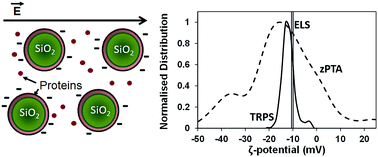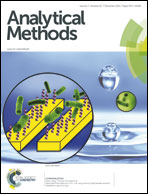A systematic comparison of different techniques to determine the zeta potential of silica nanoparticles in biological medium†
Abstract
The surface charge density of nanoparticles plays an important role in the way they interact with biological systems. The ability to measure the surface charge density of nanoparticles in biological media is therefore of importance in understanding the magnitude of such interactions. There are a number of methods which may be used to assess surface charge density through the measurement of electrophoretic mobility. In order to better understand the comparability of these methods, the ζ-potential of silica nanoparticles in water, buffer and serum-based biological medium was measured by one ensemble and two particle-by-particle techniques: electrophoretic light scattering (ELS), tunable resistive pulse sensing (TRPS) and zeta particle tracking analysis (z-PTA). To allow the comparability of results from different techniques, test samples were prepared according to an established protocol, although some variations were necessary to meet specific instrument requirements. Here we compare, for the first time, measurement results from the different techniques and discuss how modifications related to parameters such as environmental pH, dilution factor and presence of biomolecules influence the charge measurements.


 Please wait while we load your content...
Please wait while we load your content...